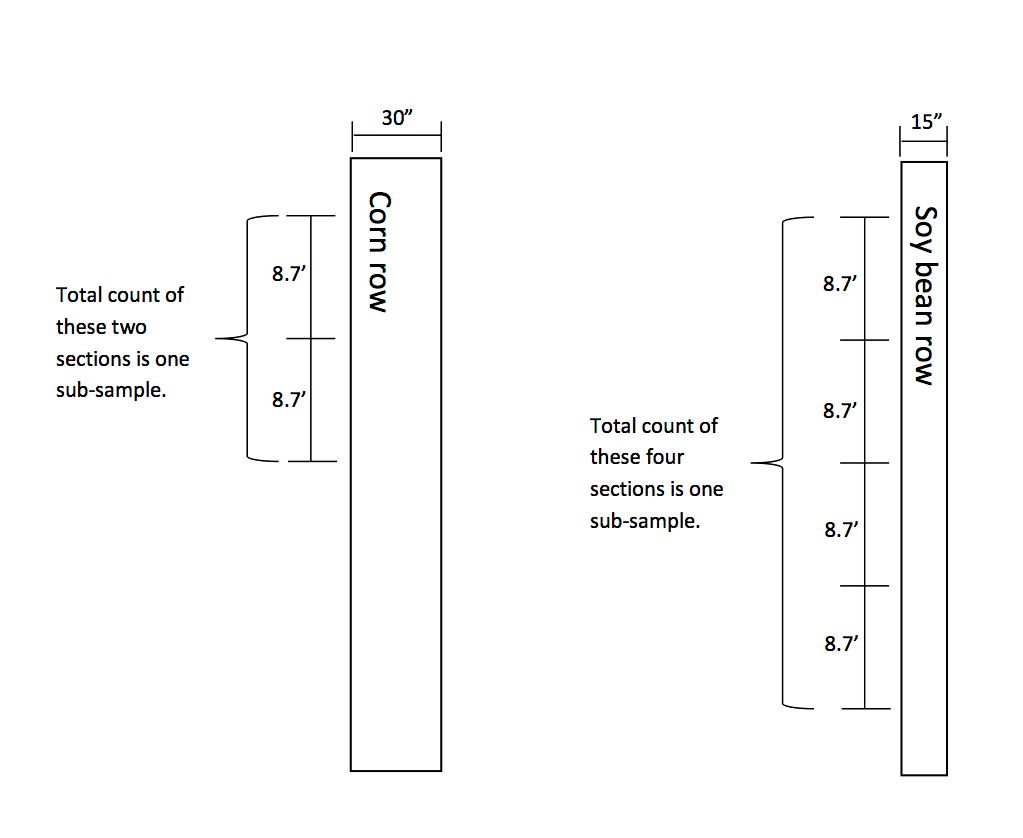Stand Counts – Annuals
Active
In use from 2008-09-01
Abstract
Stand counts provide an estimate of the number of plants per area and can be used to evaluate seedling emergence and seed quality. Stand counts are conducted in September in annual crop treatments. In each plot, three sub-sample stand counts are taken at randomly chosen sites. The length of each count corresponds to 1/1000 of a linear acre (17.4 feet in corn and 34.8 feet in soybean). Stand counts are recorded in plants per square acre which can be converted to meter squared by multiplying acre value by 4046.86.
Protocol
Lay an 8.7’ piece of PVC pipe longitudinally next to a randomly chosen row of corn or soybeans. Avoid areas that are not representative of the plot, for example, directly adjacent to station flags or sampling equipment. Count the number of plants along the length of the pipe. For corn, repeat the count by flipping the pipe end-over-end forward in the same row so each sub-sample count encompasses 17.4’ (see diagram below). For soybeans, repeat the count 4 times so each sub-sample encompasses 34.8’ (see diagram below).
Move to another randomly chosen row within the plot and repeat the sub-sample count procedure. Complete 3 sub-sample counts in each annual plot. Average the 3 sub-samples to get a replicate mean. To scale each count to the acre, multiply by 1000.
Diagram of each sub-sample:

Date modified: Thursday, May 09 2024
